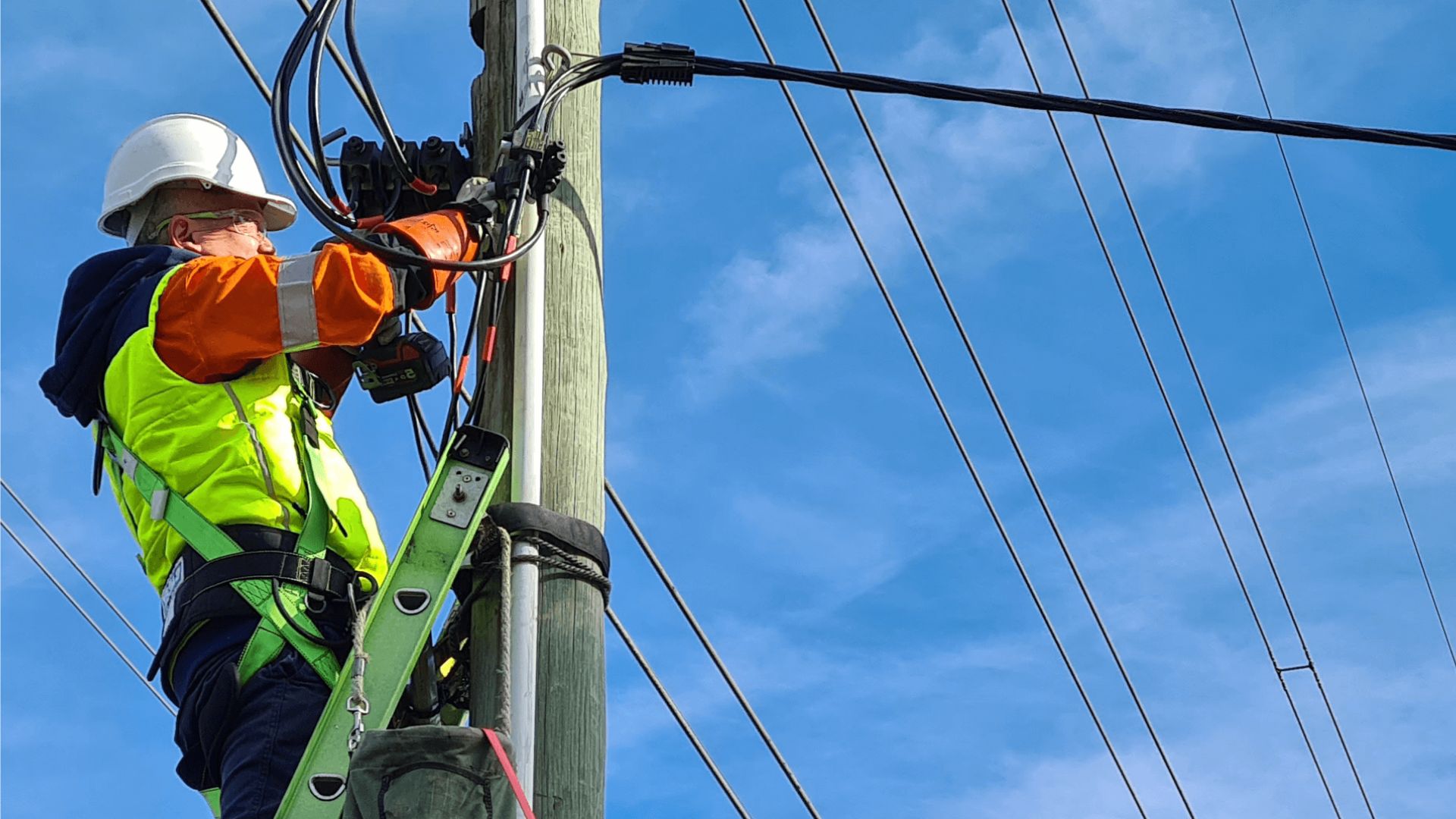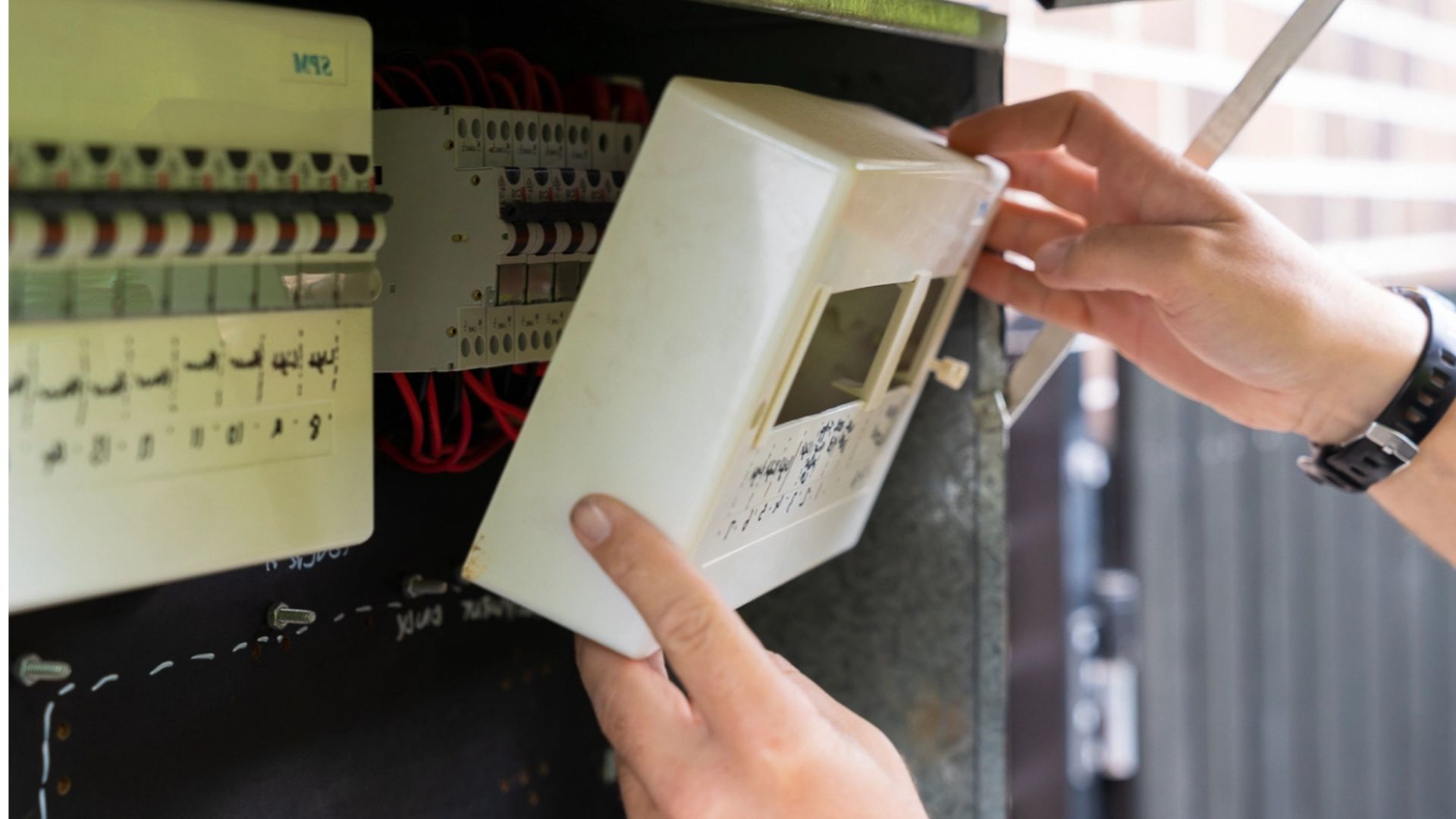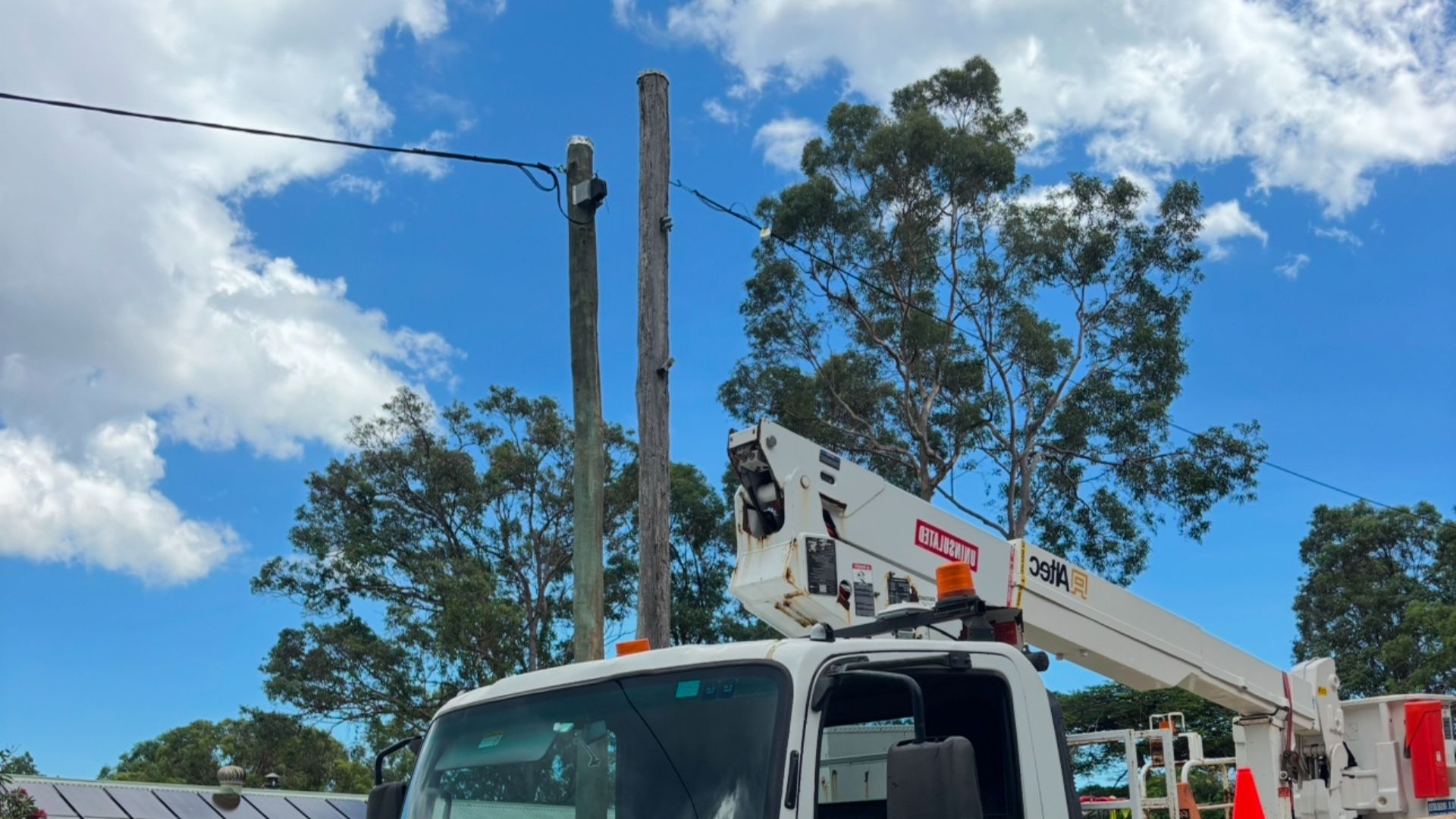Ever wondered how electricity gets from the street to your home? The answer lies in your overhead customer mains. These crucial cables do more than just hang between poles – they power your life.
At Enersol, our Residential Electrician Gold Coast - By understanding overhead service mains, you can make better decisions about safety, legal compliance, and planning for future upgrades. This article breaks it down into simple terms so you can feel confident about your electrical system.
We’ll cover what overhead customer mains are, how they work, when they’re used, legal requirements, the installation process, common challenges, and how to find the right sparkie for the job.
Defining Overhead Customer Mains
In the world of electrical infrastructure, "customer mains" refer to the electrical wiring that connects your property to the electricity network. More specifically, overhead customer mains are the overhead wires running from the utility poles on the street to your home’s point of attachment, often via a private pole.

These overhead power lines are a common method of delivering electricity across older suburbs and regional areas, and they can also be found in some new constructions. Unlike underground systems, overhead lines remain above ground and are supported by poles and riser brackets.
The key difference between overhead and underground power lines lies in visibility and accessibility. While underground power is hidden and protected, overhead electrical service allows for easier maintenance and quicker fault detection. However, it’s more exposed to weather conditions.
Basic components of an overhead service line include aerial cables, a connection point on your property (usually the fascia or riser bracket), and sometimes a private pole to bridge the distance from the street. These components work together to provide a reliable power supply.
When properly installed by a licensed electrician following the service and installation rules, overhead service mains are a safe, effective way to meet increasing electrical demands. They also simplify future upgrades, like switching from single-phase to three-phase electric power.
Understanding the basics of overhead services helps homeowners avoid safety risks, prevent frequent power outages, and stay compliant with installation rules and local regulations.
How Overhead Mains Work
Overhead customer mains start their journey from a utility pole on the street. From there, the aerial service lines carry the electrical power through overhead wires directly to your property’s point of attachment – typically mounted on the fascia of your house or a private pole if required.

The point of attachment is where your home joins the electricity network. This setup might involve riser brackets or direct mounting to ensure the overhead wires are secure and meet the proper clearance height under Australian Standards and local regulations.
From that point, the electric power flows into the consumer mains, which are the internal electrical wiring running from the connection point to your switchboard. The switchboard houses important safety gear like circuit breakers and provides control over your home’s electrical system.
Private poles are often used when the distance from the street to the property is too great or when the existing lines don’t offer a direct route. These poles also help in managing difficult terrain or when the preferred point of attachment isn’t available.
Mounting brackets and risers ensure the service lines are properly angled and tensioned. They help maintain the integrity of the connection while meeting overhead service mains installation requirements.
This setup makes overhead power easier to inspect and repair compared to underground power lines, which require digging and more complex servicing.
When done right, all our installations follow the service and installation rules, delivering electricity safely and effectively. This system also helps prevent flickering lights, frequent tripping, and other issues that often point to outdated consumer mains.
Whether you’re in an older home or building something new in a challenging location, overhead lines offer a reliable power solution. They’re especially handy when you need more power or when upgrading from single-phase to three-phase.
Ultimately, overhead services keep your power flowing and your home safe. Just make sure the work is handled by a qualified electrician or licensed Level 2 ASP who understands Endeavour Energy’s network standards and compliance requirements.
When Are Overhead Mains Used?
Overhead service mains are still a common sight across many parts of Australia, especially in older suburbs and regional areas. While underground power might be the modern trend, overhead lines still have a solid role to play — and in some cases, they’re the more practical choice.
Older Suburbs and Established Areas
In long-established suburbs, overhead power has been the standard for decades. These neighbourhoods were originally built with overhead infrastructure in mind, so continuing with that setup often makes more sense, particularly when it comes to upgrades or ongoing maintenance.
Regional and Rural Applications
Out in the country, overhead power lines are far more common — and for good reason. The sheer distances between properties, rocky terrain, and lack of access to trenching equipment make underground cabling difficult and expensive. In these areas, stringing power above ground remains the most logical and efficient approach.
Overhead Lines for New Builds
Although many new homes go underground for power supply, that’s not always possible. Sloping blocks, tricky site layouts, or budget constraints can make overhead service lines a more viable option. In fact, overhead installation is often quicker and simpler, especially when working with uneven ground or limited access.
Electrical Upgrades and Renovations
Upgrading your switchboard? Adding a new home office or pool? You may find your existing overhead customer mains need a boost to keep up with increased power demand. In these scenarios, upgrading your overhead lines can be a cost-effective way to ensure your electrical system remains safe and reliable.
When Existing Lines Are Non-Compliant or Damaged
If your current overhead mains are damaged or don’t meet safety standards, replacement is necessary. Rather than digging up the property for an underground system, which can get pricey, many homeowners stick with overhead mains for a faster, more budget-friendly solution.
A Practical Choice Based on Site Needs
Going with overhead mains isn’t just about sticking to the old ways. It’s about choosing a power supply option that suits your property’s specific needs, from site conditions and access to budget and future plans. In many cases, overhead lines still offer a flexible, dependable solution.
Benefits of Overhead Customer Mains
Overhead customer mains offer several benefits that make them a practical choice in many settings. One of the biggest advantages is the speed of installation. Compared to underground systems, overhead service mains installation is typically faster and involves less disruption to your property.

Because the cables and poles are visible, overhead electrical service is much easier to inspect and maintain. If something goes wrong, like flickering lights or frequent tripping, electricians can quickly locate and resolve the issue without needing to dig.
Another big plus? Cost. Overhead services are generally more affordable to install and maintain than underground options, especially in areas with difficult terrain or limited access.
Homeowners and developers also appreciate the flexibility. Whether you need a single phase or three-phase setup, overhead power can be configured to meet your specific electrical demands.
It’s also ideal when managing upgrades, as overhead lines allow for a more seamless transition when increasing supply or replacing outdated consumer mains. Plus, overhead installations help avoid common safety risks associated with underground service lines.
All in all, if you’re after a reliable power solution with fewer headaches, overhead customer mains are a smart, future-proof option.
Legal Requirements & Compliance
Installing or upgrading overhead customer mains comes with strict compliance requirements to ensure safety. First and foremost, only a licensed electrician with Level 2 ASP accreditation is authorised to carry out this type of work. They understand the installation rules and safety protocols set out by Endeavour Energy and other supply authorities.
Work must comply with the Australian Standards (AS/NZS 3000), which govern all electrical installations, including overhead service mains installation. These standards specify how overhead wires should be mounted, insulated, and routed to reduce safety risks.
Clearance height is another key factor. Overhead service lines must be installed at a minimum height to ensure safe distances from pedestrians, vehicles, and structures. This helps reduce the risk of contact with power lines during storms or maintenance.
Depending on your property and the existing lines, approvals may also be needed from your local council or the electricity network provider. A qualified electrician will know when these approvals apply and can handle the paperwork on your behalf.
The work must also follow service and installation rules to ensure all connections, poles, and cable types meet industry standards.
Whether you’re installing overhead power for the first time or replacing old service lines, staying compliant protects your home and keeps your power supply uninterrupted.
Installation Process: What to Expect
The overhead service mains installation process starts with an initial inspection by a licensed electrician. They’ll assess your site, check the existing lines, and provide a detailed quote.
If you’re replacing outdated consumer mains, power disconnection is required to ensure a safe work environment. Your electrician will coordinate this with your electricity provider and arrange reconnection services once the job is complete.
Installation typically involves setting up new brackets or riser brackets on your home, erecting a private pole if necessary, and stringing the aerial cables securely between connection points.
Once everything is mounted, the electrician tests the system for compliance with service and installation rules. This includes checking the integrity of the cables, clearance heights, and ensuring your circuit breakers and switchboard are functioning correctly.
After final testing, power is reconnected, and you’re good to go with a safe, reliable power supply.
Common Challenges & How They’re Managed
Installing overhead power isn’t without its hurdles. One common challenge is limited property access, especially on narrow blocks or with landscaping in the way. A licensed electrician will plan around these constraints to find the best path for the overhead wires.
Trees and other obstacles near the cable route can interfere with installation. In such cases, trimming or rerouting may be necessary to comply with clearance requirements.
Weather conditions also impact overhead work. Rain, wind, or extreme heat can delay installation. Professional teams work around forecasted weather and ensure all installations are weather-resilient.
Older homes often come with outdated consumer mains that no longer meet current safety standards. In these cases, a complete upgrade may be required, including replacing the private pole, service lines, and electrical wiring.
By working with a qualified electrician experienced in overhead electrical service, these challenges can be managed safely and efficiently.
Choosing the Right Electrician
For overhead services, hiring a licensed Level 2 ASP is non-negotiable. These professionals are certified to handle live electrical systems and are trained in the latest service and installation rules.
Look for someone with proven experience in overhead service mains installation. Ask about their past projects, how they handle tricky weather conditions, and if they understand your local regulations and electricity network.
A reliable sparkie should also offer clear quotes, timelines, and advice tailored to your property’s needs.
Powering Your Property the Right Way
Understanding overhead customer mains isn’t just for sparkies. It’s essential for anyone who wants a safe, compliant, and reliable power supply. Knowing the ins and outs of overhead lines, electrical wiring, and service lines helps you avoid safety risks and prevent frequent power outages.
Whether you’re building, renovating, or just curious, staying informed ensures your property’s electrical system is ready for increased demand and future upgrades. Explore our Residential Electrician Gold Coast to learn more.
Need a reliable team for your overhead consumer mains installation or upgrade? Enersol Electrical provides certified, hassle-free services tailored to your site and supply needs. Contact our experienced Level 2 electricians today to keep your property running safely and efficiently.